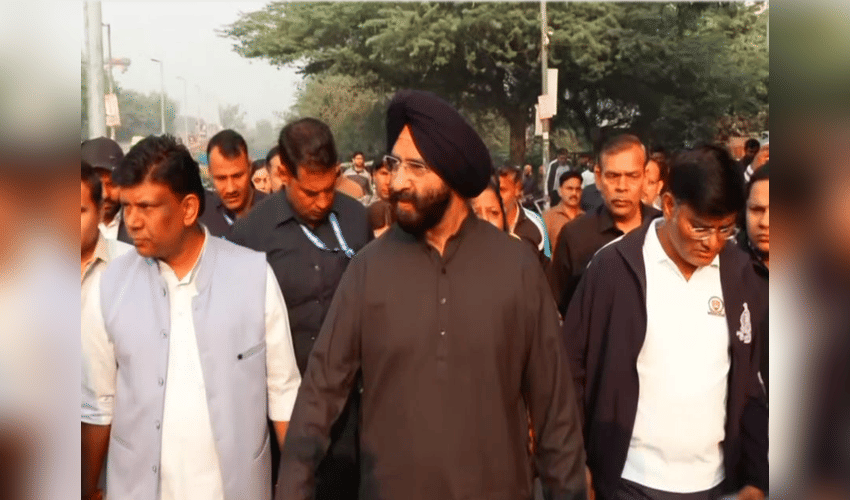Politics
Delhi Environment Minister Manjinder Singh Sirsa inspects sanitation and cleanliness efforts in Vasant Kunj.

Delhi Environment Minister Manjinder Singh Sirsa on Saturday inspected and reviewed the sanitation and cleanliness situation in Vasant Kunj. He said the government has identified 62 major pollution hotspots in the capital—areas where dust and traffic significantly contribute to deteriorating air quality—and is actively working to address them.
Sirsa noted that road dust, construction activities, and other PM10 sources are major drivers of pollution in Delhi, and emphasized that work is underway to improve the situation. Speaking to reporters, he said, “A lot of work needs to be done on the roads. There are many gaps in sanitation. PM10 is the biggest reason for pollution in Delhi, coming from construction sites, road dust, and several other factors. We have identified 62 hotspots where dust or traffic are the main contributors, and we are working on all of them. We have reviewed all the hotspots in Vasant Kunj and Vasant Vihar. Much improvement is required.”
He added that the city’s fight for cleaner air is focused on reducing dust, which turns into smog as winter sets in. “Stubble burning has a major impact, but with the sowing season approaching, its influence will gradually reduce. Border areas of Delhi are still affected by polluting industries that were relocated, and the state government is addressing this as well,” he said.
Meanwhile, Delhi woke up to dense smog on Saturday morning, with the Air Quality Index (AQI) touching 386 at 8 am—classified as “very poor”—according to Central Pollution Control Board (CPCB) data. Several localities recorded critical pollution levels: Ashok Vihar (415), Bawana (441), Burari Crossing (383), CRRI Mathura Road (365), Chandni Chowk (419), Dwarka Sector-8 (393), ITO (418), Jahangirpuri (422), JLN Stadium (389), Mundka (426), Najafgarh (385), Narela (418), Patparganj (399), Punjabi Bagh (405), RK Puram (406), Rohini (423), Siri Fort (495), Sonia Vihar (410), Vivek Vihar (418), and Wazirpur (447). Most of these places fell under the “very poor” or “severe” pollution categories.



